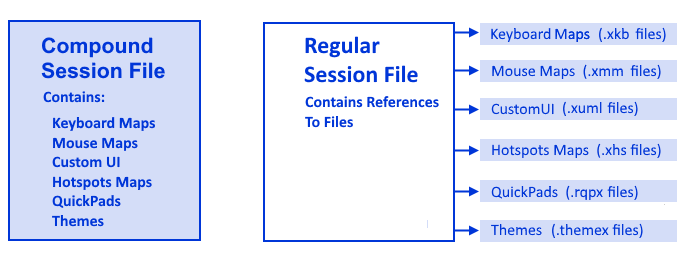1.4.1 Create and Customize Reflection Sessions
Reflection stores the information required to connect to hosts in configuration files called session document files. You can create session document files that have connection information and other settings and then deploy them independently of your installation.
You can also customize session document files to use custom keyboard maps, controls, themes, and other settings. To customize these settings, see Create and Customize Session Documents.
By default, Reflection saves custom settings for QuickPads, keyboard maps, themes, mouse maps, hotspots, and ribbons in separate configuration files that you will need to deploy along with the session document files that reference them. But you can simplify your deployment by saving your session documents as compound session files, which include all of these settings.

Compound Session Document files include all of the customized settings for QuickPads, keyboard maps, themes, mouse maps, hotspots, and ribbons. These files allow you to deploy your sessions without having to deploy dependant files for these settings.
Session Document files save these settings in separate files. If you save sessions using this default, you’ll need to make sure that you deploy the custom files to the correct locations as shown in Customized Files and Where to Deploy Them.
Compound files are easier to deploy because you don’t have to deploy the supporting files. Regular session files offer more flexibility for sharing common configurations. For example, you can reference one custom keyboard map from several regular session files. With compound session documents, you have to recreate the custom settings in each file.
NOTE:Not all custom settings are saved in compound session files. For example, settings such as ssh_config and ssh_known_hosts required for Secure Shell connections are not saved in these files.